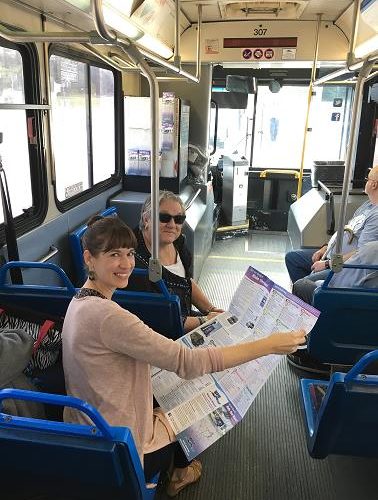Guest Authors: Judy L. Shanley, Ph.D., Co-Director, National Center for Mobility Management and Vanessa Lacer, Mobility Manager, Wave Transit
This blog is second in a series on Information & Referral. You can read the introductory blog in the series here.
When it comes down to it, the mobility manager profession would not exist without information and referral (I&R) services. When the Federal Transit Administration-funded National Center for Mobility Management compiled competencies for the growing number of mobility management professionals in the United States, it became clear that I&R supports the many responsibilities of a mobility management position. For example, mobility managers are responsible for understanding and addressing the unique transportation challenges that people with disabilities, older adults, veterans, transitioning youth, low income individuals and other vulnerable populations face in their efforts to travel. This requires the ability to cull the right information, package the information in a useful way, and disseminate that information in a way that’s accessible to a wide range of requesters.
To learn more about how I&R services are used by mobility managers, the National Center for Mobility Management recently spoke with Vanessa Lacer, a mobility manager with Wave Transit in Wilmington, North Carolina. When asked what I&R means for her, Lacer replied, “Relationships.”
According to Lacer, excellent working relationships are essential if mobility managers wish to bring people and service together. Mobility Management is by definition the bridge between people and service with a focus on the “people” part of the equation. A people-focused approach involves providing customers with information about their transportation choices, including referral to specific service providers.
If professional relationships are strong, a mobility manager will be able to provide excellent information that can support customer decisions. In many cases it is important to know the individuals who are gatekeepers of information, as facts can change quickly when funding fluctuates. Additionally, working relationships can be leveraged to meet customer needs through referral to specific service providers. Referral is a wise move for a mobility management program as it reduces service duplication, stretches limited funding, and allows the mobility manger to serve a greater number of customers.
“When I am asked to give advice to someone entering the field of mobility management, no matter what job duties are associated with their position, I always advise them to immediately begin to create a circle of reciprocity around themselves and their organization,” said Lacer. Mobility managers ask how they can help others, share opportunities, and attend events. Lacer added, “When you show yourself to be a valuable partner, you will gain the relationships you need in order to offer information and referrals to your customers.”
Judy Shanley, NCMM Director, points out that there is not a one-size-fits-all mobility management position. What is common is that I&R means that diverse audiences can access high quality, useful, and relevant information. This means information and supports they can trust and that can be used to improve their lives. I&R for mobility managers means conveying information that will enable people to live, learn, work, and play in inclusive communities.
NADTC offers free information and referral by phone or email. Call us at 866-983-3222 or contact@nadtc.org.

Leave a Reply